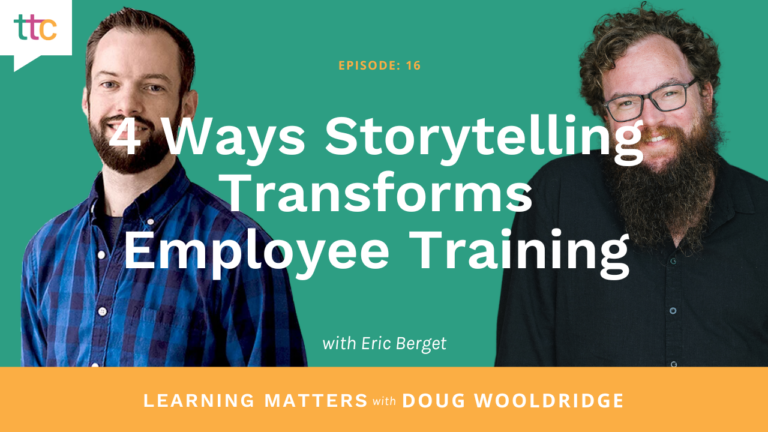Are you new to the role of a subject matter expert (SME) and unsure how to provide feedback to your instructional designer (ID)? Or are you an experienced SME who finds yourself frustrated with the development process because your ID just doesn’t seem to be capturing your feedback in revisions? Whether you’re new to the learning development process or an experienced SME, the review and revision phases in the development process can be complex when you’re facing challenges communicating with your ID. There are ways to avoid these pitfalls in providing valuable and helpful feedback as a SME.
Before we share some specific strategies, let’s take a step back and align on the roles of SME and ID. IDs have two primary goals in any project:
- Collaborate with the SMEs.
- Develop amazing learning content.
Part two requires a strong relationship with part one — and both require trust, collaboration, and respect. For IDs, this means getting what they need from SMEs when needed, and in a way they understand. The trick is, that’s also what SMEs need — to understand what IDs need from them, when they need to provide it, and in what way.
The breakdown in most ID projects happens when either the SME doesn’t provide feedback, or the ID isn’t sure what to do with the feedback they receive. Those situations bring development to a halt, creating frustration and angst on both sides.
As a SME, you are vital to making any learning project a success. Your insights and expertise are the heart and soul of any learning deliverable. So how can you make sure that your ID is hearing your thoughts and implementing them correctly?
There are five expert strategies a SME can employ to provide exceptional feedback to your ID that will ensure effective progression through the development process. Let’s take a closer look!
1. Stick to your project timelines.
ID projects are a finely orchestrated series of events, including SME review and revision. If one element of a project plan is delayed, it can derail the subsequent tasks or even the rest of the project. We know SMEs never want to be the blocker in a project— potentially dismantling an entire timeline. But we also know that as a SME, you’re likely juggling many other tasks and responsibilities. Providing your provide feedback within the review window in line with the project plan is crucial to projects staying on time. As you manage your contributions to the learning project, track the dates of your review windows, and, if you think you’ll be unable to meet those timelines, alert your ID and your project manager. Communicating early about any potential delays can help the ID plan accordingly and make the needed adjustments to the project plan.
2. Provide specific feedback.
Have you ever lacked a clear vision of the finished product during development, but you also knew the current version your ID shared isn’t there yet? You’re not alone. In many cases, SMEs have a vision, and it’s the ID’s job to interpret that vision and bring it to life. But for your ID to do that, your feedback needs to be specific and actionable (we’ll talk more about actionable feedback in the next strategy). Here are a few tips to ensure that your feedback is specific:
- Avoid general statements. You might still be working through ideas, and that’s great. IDs want their SMEs to think creatively. But they also need the SME to avoid using your document comments and work through your thoughts. Feedback such as, “This section isn’t working” or “Can this be presented differently” doesn’t provide your ID with insight into what you’re looking for. They won’t have a clear direction of what to revise or how.
- Prompt ideas with examples. Instead, try sharing some examples by using statements like, “How about a different approach, such as…” or “I have a vision of…”. Or, you can always drop in sample visuals or links to other ideas you’ve seen online or in resources.
- Point to areas that work. If there are sections of the document or deliverable that really reflect what you’re looking for, call attention to those sections. This can help them interpret where any differences might be and make the appropriate adjustments. As well as affirm places where they are on track!
- Schedule a working session. Another option is to work through your ideas with your ID by scheduling a working session. Sometimes brainstorming together can help uncover a solution just by having an open conversation. IDs are trained to ask key questions to help SMEs develop their ideas and articulate their vision. Let your IDs guide you through your thought journey.
3. Use action verbs.
Next, let’s look at ways you can provide feedback that isn’t just specific but is also actionable. The feedback that starts with specific action verbs provides the exact direction an ID can implement the SMEs ideas. Verbs that are useful in the feedback process are “Move,” “Edit,” “Revise,” “Replace,” and “Fix.” Statements that start with these verbs indicate to the ID exactly what kind of revision you’re looking for and how they can implement it.
4. Take a collaborative approach.
Most importantly, your ID is there to support you. They are your partners throughout the development process. If you’re ever unclear about the next steps or are struggling to find a creative solution, ask your ID for help. They’re creative and have a good idea of what’s possible. So don’t be afraid to lean on them to help you brainstorm.
5. Focus on objectives and goals.
At the beginning of any project, your development team will set clear objectives and goals both for the project and the deliverable. But, we also know that sometimes great ideas require a shift in approach. If your feedback suggests a different direction, it’s a good idea to reach out to your ID. They can help find ways to make room for creativity while staying in alignment. IDs know what the end goal is, so they can help guide your thoughts in getting there. If your ID knows the why, they can help determine the how while staying in alignment with project objectives and goals.
Remember, your ID is excited to work with you as an expert in your field. Their priority is infusing your insights into the deliverables throughout the development process — particularly through the review and revision phases. The feedback you provide during these stages can either delay development or drive amazing outcomes. Putting the five strategies above to work will help ensure your ID receives feedback they can use and implement effectively at any stage. By being on time, specific, collaborative, and focused when crafting your feedback, you can develop a strong partnership with your ID. Together you will create effective and engaging learning products – the goal for every ID and SME.
Are you a skilled SME or ID looking to collaborate with today’s top talent? Apply as a consultant and join the innovation!

#UnlockInnovation With Us
• Collaborative and supportive network
• Work with L&D industry influencers
• Access to professional development
• Flexible hours and virtual environment






